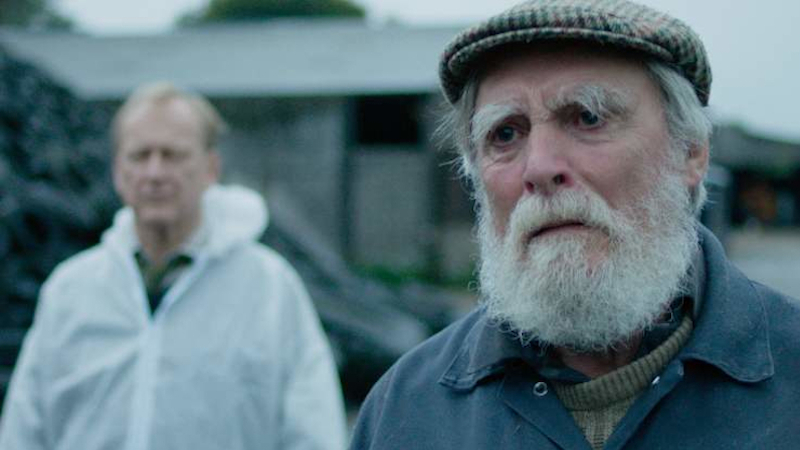Director – Paul Robinson – 2023 – UK – Cert. 15 – 81m
***1/2
The deep friendship of a Devon farmer and a local vet is tested by the UK government’s culling of herds in the 2001 Foot And Mouth outbreak – out in UK cinemas on Friday, September 1st
Michael (David Fielder) is a Devon farmer. Everyone knows everyone else in his local, rural community, and he is often visited by the vet Jeffrey (Nigel Hastings), first glimpsed in an uncharacteristic, bright red cowboy hat he won at a local village do when he turns up to help with the delivery of a calf. He’s previously tested Michael’s cows for Foot and Mouth disease, and all the results have been negative.
Later in 2001, Jeffrey visits Michael again, but this time with three other white-protective-suited colleagues and some bad news. With the Foot and Mouth outbreak reaching epidemic proportions, the government has decided to cull all cattle within a three-mile radius of any infection, regardless of whether they test negative or positive for the disease. Michael, shotgun at the ready, thinks there’s a mistake because, as Jeffrey knows, Michael’s herd has tested negative. But, as Jeffrey attempts to explain, government policy doesn’t work like that…
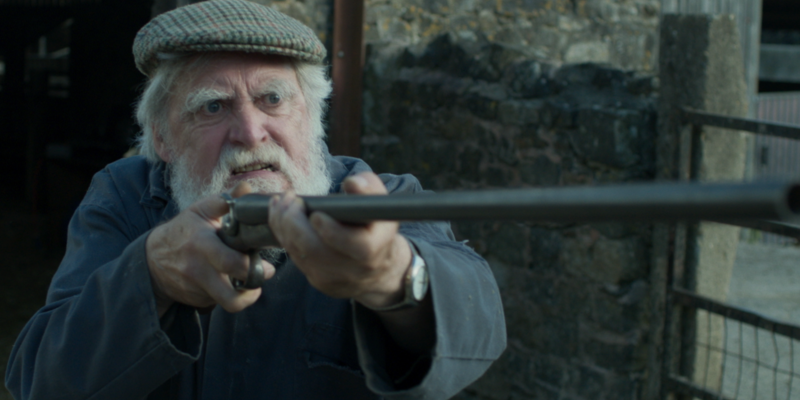
There are further scenes in December 2001, eight years later in 2009 and four years later still in 2013. In the first, Michael finds Jeffrey asleep in his barn following the latter’s involvement in a road accident, in the second the two men attend the wedding party of Jeffrey’s daughter Holly at the local village hall and in the third Michael is dying and leaves his house to Jeffrey.
This is essentially a film adaptation of Bea Roberts’ multi-award-winning a stage play, with the two leads Fielder and Hastings reprising their roles in the screen version. Stage plays are often adapted into film are for all the wrong reasons (i.e. the play was successful and made money) and frequently play out as movies as terrible as the original stage productions were excellent. This critic has seen far too many of those. The two media are very different, and serious rethinking is required to make the film version work as a film. While the stage origins of And Then Come The Nightjars are evident in the film’s construction around two characters in serial, fixed locations, the former don’t feel like stage characters while the latter feel like real locations, both of which feats are major achievements against the odds.
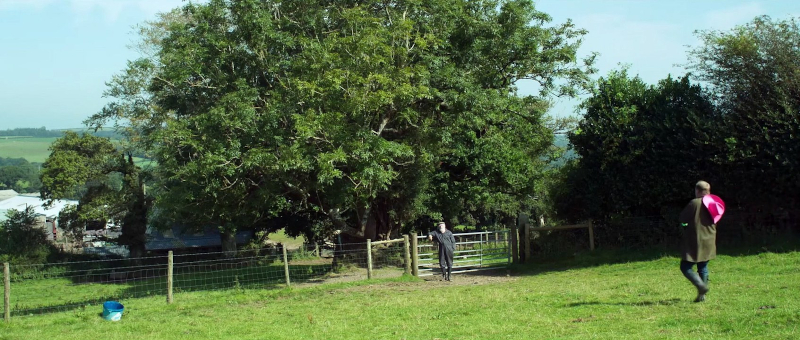
This has further, undeniable strengths. For one thing, it presents a powerful insider’s view of the 2001 UK Foot and Mouth outbreak showing how government agricultural policy set members of the farming community against one another as former friends and colleagues find themselves on opposite sides of the fence with farmers understandably wishing to preserve healthy herds while other professionals are charged with culling those herds in line with emergency protocols.
For another, it works as a compelling exploration of the nature of male bonding and long-term friendships. The two men are very different. Michael is a widower who misses his late wife terribly. He thinks of his cows as his family and refers constantly to “my girls”. The idea of having his herd culled – the equivalent to the government slaughtering his adopted offspring – is clearly traumatic for him. When we first meet him, it’s clear from his conversation with Michael that Jeffrey’s marriage is falling apart – he refers to sleeping on a camp bed downstairs at home – and the couple have a young daughter, Holly. When at the years’ end he turns up asleep in the barn after the car accident, it transpires that his wife has finally left him, taking Holly with her, and Jeffrey is at the end of his tether.
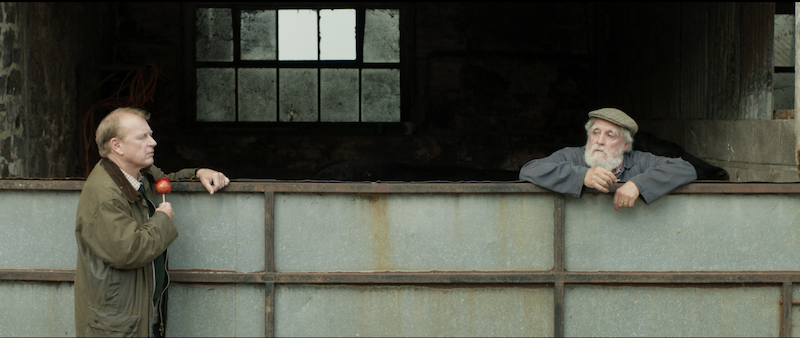
Certain elements hint at the film’s being made on a shoestring. The early scene of Jeffrey turning up to help deliver a calf utilises maybe three shots of a cow, no birth, no calf, those elements being implied by human characters in one part of the barn looking at the offspring birth in another part of the barn. This feels at once like an annoying exercise in shooting something to which the budget won’t extend, and quite a clever solution to that problem. If you can get past the feeling of budget limitation – which might, admittedly, prove a very big ‘if’ – it proves effective.
And it leads to other ideas when director Robinson wants to put the culling onscreen but clearly either doesn’t want to use or can’t afford access to archive footage of herd culling and piles of cows being burned in pyres; he uses a background of smoke and flame with the calf’s carcass wheeled through on a pulled in the foreground which seems not only in keeping with the overall small scale of the production design but also highly effective as an image of the culling as a means of dealing with the epidemic. Low budget it may be, but the film tackles monumental issues.
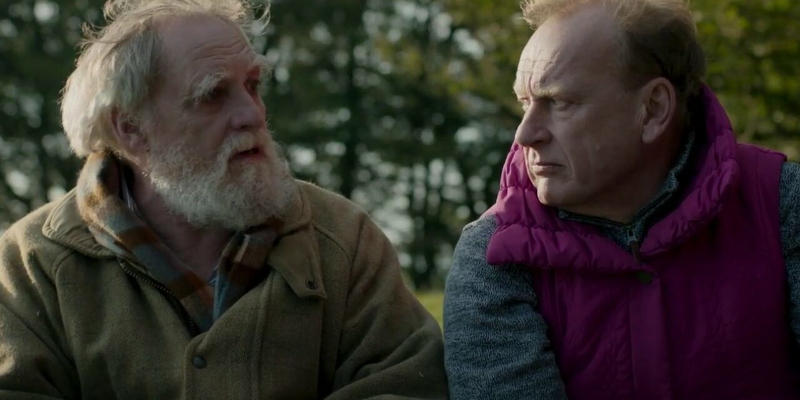
Perhaps its greatest achievement is to portray pivotal elements of rural life, when our national cinema is so often focused on people and events either in urban areas or urban people living in the countryside. Apart from government policy created in a distant, unseen and seemingly irrelevant London, there is nothing urban about this thoroughly British – or English, or West Country – film, which showcases a Britain – or England, or West Country – of farms, cowsheds, barns, village halls, country roads and fields without ever making us feel (as so many British rural films do) that any elements are missing or that the main event is taking place in an urban location elsewhere. Which is something very necessary and quite remarkable, giving a voice to parts of Britain that often don’t get a say in the national conversation.
And Then Come The Nightjars is out in cinemas in the UK on Friday, September 1st.
Trailer:
